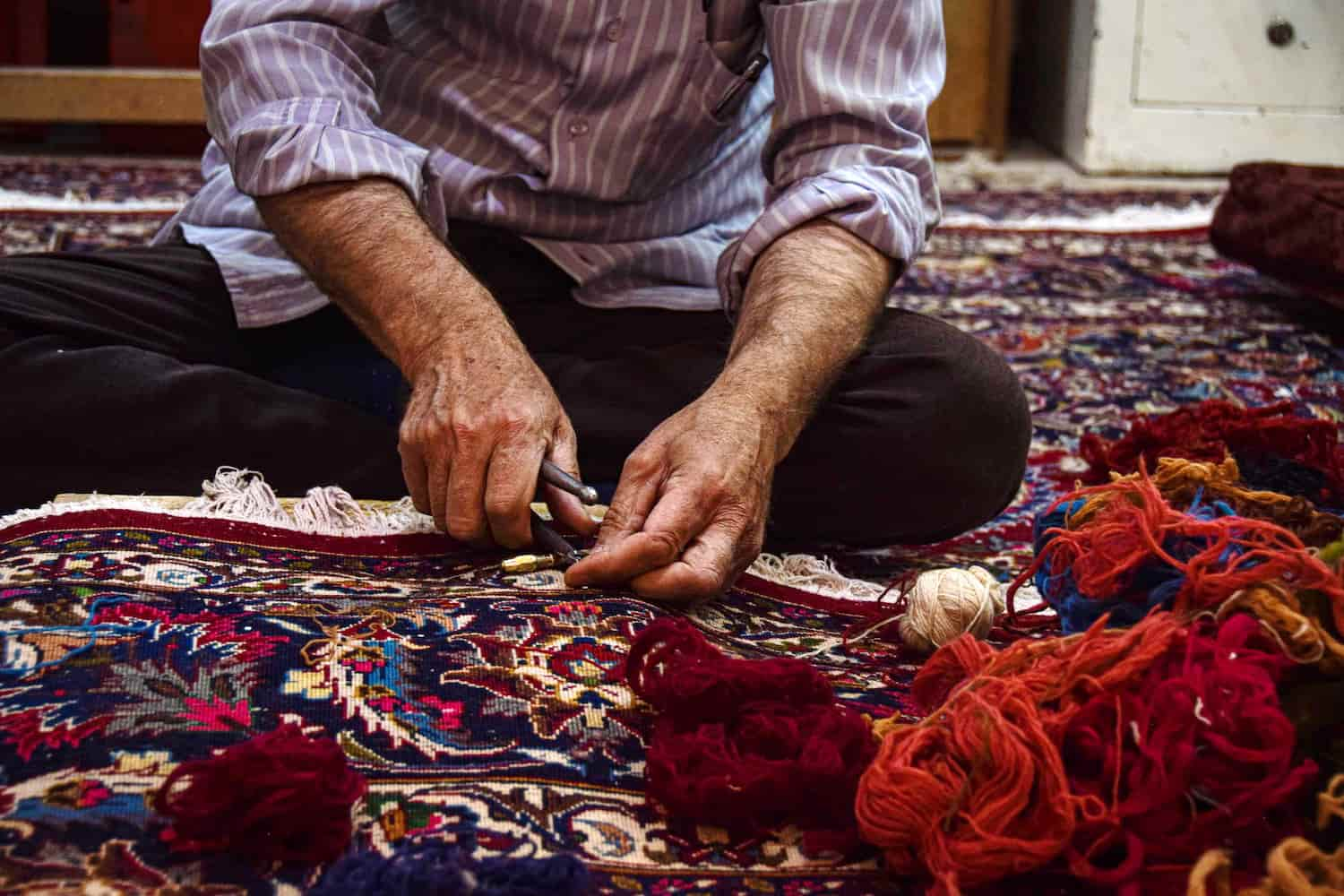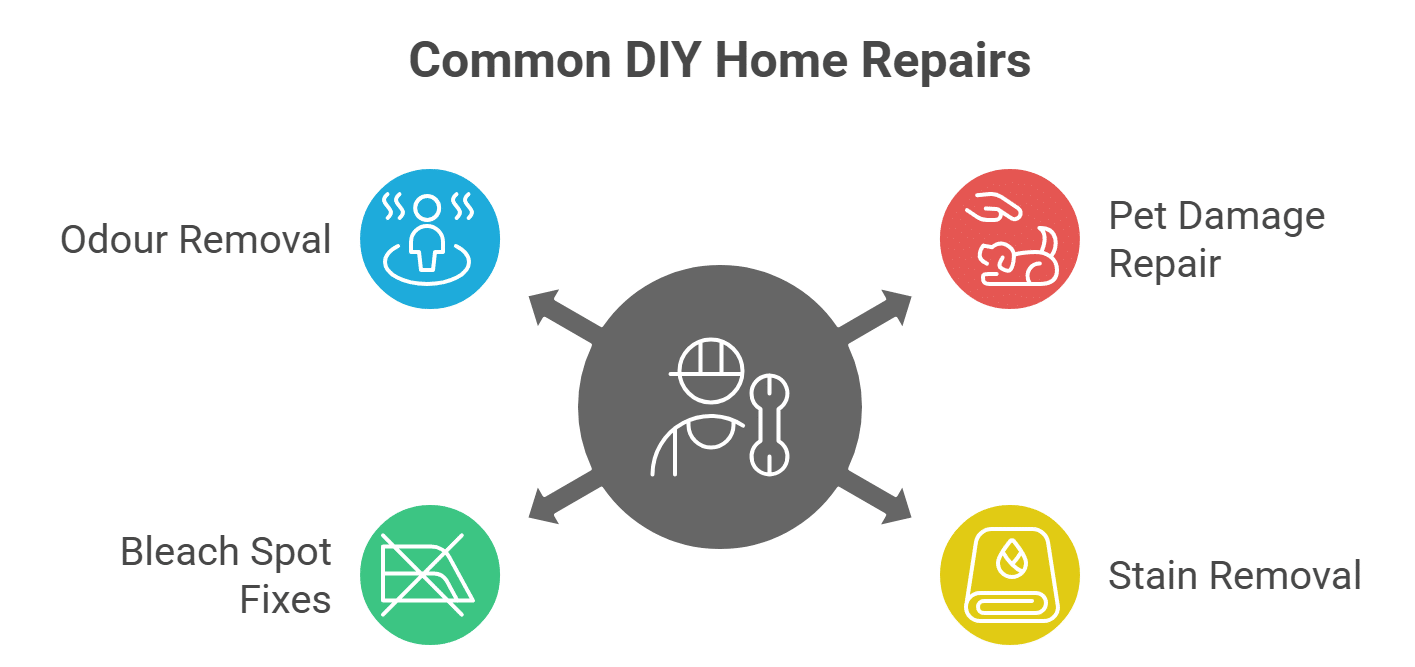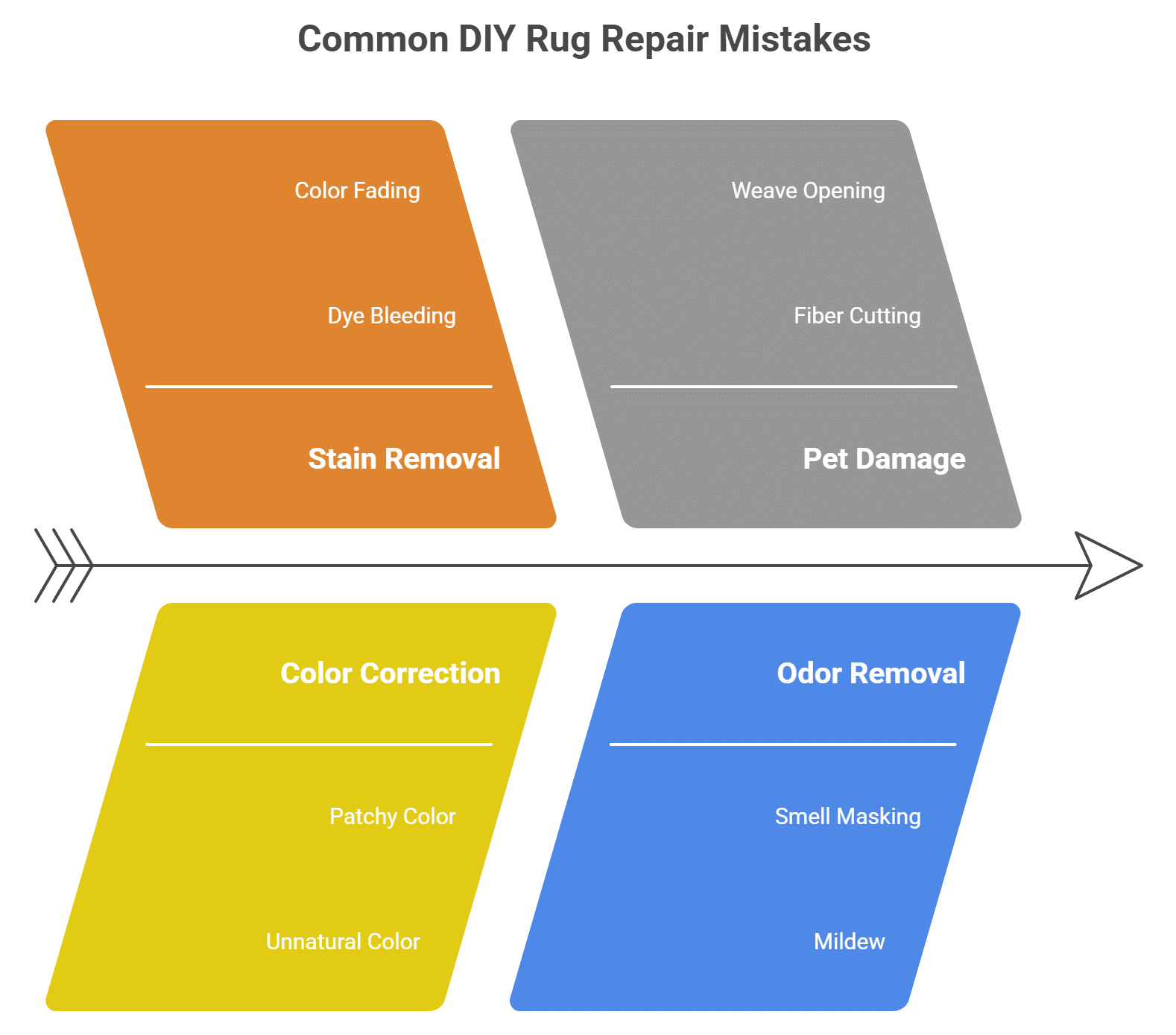Across North Vancouver, more people than ever are turning to DIY videos to fix everything from torn carpets to stubborn pet stains. It makes sense. A quick search on social media shows dozens of “easy fixes” using household cleaners, fabric dyes, and even razor blades. When you’re trying to save money, the temptation is real.
But handmade rugs and high-quality wool carpets don’t behave like mass-produced materials. Their fibers, dyes, knots, and structure are far more delicate. A repair that looks simple online can quickly become permanent damage in real life.
This article explores the repairs homeowners often attempt themselves, why these methods fail, and why certain carpets and rugs in particular deserve the hands of an experienced craftsperson.
Not Every Carpet Is Meant for DIY Fixes
Before thinking about repairs, it helps to understand that carpets fall into very different categories:
• Wall-to-wall carpet, made from nylon or polyester
• Machine-woven rugs, usually synthetic
• Handwoven Persian or Oriental rugs, made from natural wool, silk, and plant-based dyes
Those last two—especially the handmade ones—are where DIY repairs become risky. Their fibres absorb pigment differently, react unpredictably to chemicals, and rely on tension in the weave to stay intact. A change in one area can distort the entire rug.
This is where a specialized repair studio becomes valuable.
North Vancouver has a few well-known places that handle delicate rug restoration, and one of the most respected studios is located right off Marine Drive. The location can be seen here on Google Maps.
The Most Common DIY Repairs People Attempt
Homeowners in Vancouver frequently try their hand at:
Pet damage repair
Chewed corners, scratched fibers, torn fringes, pet urine marks.
Stain removal
Wine, coffee, turmeric, rust, and makeup stains are the usual suspects.
Bleach spot fixes
Accidental contact with cleaning products.
Odour removal
Especially long-term pet odours or damp smells.
On the surface, these seem doable. After all, online tutorials make them look effortless. But the materials in real rugs are far more complicated than the tutorials suggest — especially when dealing with wool, natural dyes, or distressed areas.
Where DIY Starts Well… Then Goes Wrong
1. Stain Removal Attempts
A lot of DIY guides suggest vinegar, baking soda, or over-the-counter cleaners. On a synthetic carpet, these might work. On a handmade rug, they often cause:
• Dye bleeding
• Colour fading
• Distortion of the wool texture
• Spread of the original stain into surrounding patterns
Once dye has bled, no home treatment can undo it.
2. Colour Correction and Bleach Spot Repair
People often try fabric markers or store-bought dye kits. But handmade rugs use natural dyes with subtle tones — not flat, uniform colours.
The result is usually one of the following:
• A patch that looks darker than the rest
• A bright, unnatural colour
• A shiny spot where the fibres were damaged
• A permanent halo around the bleach area
If the wrong dye soaks too deep, even a professional studio may not fully reverse it.
3. DIY Pet Damage Fixes
This is where most irreversible harm happens.
Homeowners often:
• Cut off loose fibres
• Trim around a damaged corner
• Pull at a thread, causing the weave to open
• Apply strong cleaners that burn the wool
The damage tends to spread with foot traffic.
By the time it reaches a repair studio, the job is larger and more costly — and sometimes part of the design is too distorted to restore perfectly.
4. Odour Removal Missteps
Pet urine reaches the foundation of the rug, not just the top layer.
DIY attempts often:
• Mask the smell instead of neutralizing it
• Add moisture that leads to mildew
• Leave behind chemical residue that stiffens the wool
A rug that wasn’t smelly before the DIY attempt may begin to smell musty afterward.
Why Some Damage Becomes Irreversible
Handwoven carpets are built on tension. The knots depend on each other to hold shape. When someone:
• Cuts a knot
• Pulls a corner
• Scrapes the surface with a blade
• Applies too much liquid
The tension shifts. In worst cases, this causes a ripple or wave in the rug — something that cannot be undone without major reconstruction.
And when natural dyes are altered, the rug may permanently lose part of its original character or market value.
How Professional Repair Studios Work
There’s a dramatic difference between DIY work and what happens in a rug repair studio.
Professionals use:
• Custom-matched natural dyes
• Hand-spun wool to match texture
• Micro-weaving to rebuild missing areas
• Special stain removal formulas safe for natural fibres
• Deep odour neutralization methods that reach the foundation
• Controlled drying systems to prevent mildew
These aren’t general labour tasks. They’re craft techniques passed down through generations, especially within Persian rug repair traditions.
For readers who want to see how this work is performed, Shenasi’s repair overview offers a deeper look:
Real Examples of DIY Gone Wrong
Case 1: The Bleach Spot That Multiplied
A homeowner attempted to dab bleach out with a cleaning solution.
The bleach spread into a larger circle, dissolving more dye and weakening the fibres.
Case 2: A Torn Fringe That Became a 6-Inch Gap
Cutting off loose threads didn’t solve the problem — it removed structural knots.
The rug began to unravel.
Case 3: A Coffee Stain That Turned Blue
A popular DIY mix created a chemical reaction with the natural dye.
The stain became darker and more noticeable than before.
Each one could have been a simple professional fix in the beginning.
So When Is DIY Actually OK?
There are a few safe tasks:
• Light vacuuming
• Brushing away surface dust
• Blotting spills gently with a dry cloth
• Air drying after accidental moisture
Anything involving chemicals, blades, dyes, or deep odours is better avoided.
How to Choose a Trustworthy Repair Expert
Look for studios that:
• Specialize in handmade and Oriental rugs
• Show real before-and-after examples
• Understand natural dye behaviour
• Have long-standing community presence
• Explain their process transparently
Shenasi Carpet in North Vancouver is one of the studios known for this kind of work.
Conclusion: Preserving What Matters
Handmade rugs aren’t just flooring.
They’re heirlooms, art pieces, cultural expressions, and often meaningful gifts.
While DIY repairs seem convenient, the margin for error is thin. One wrong step can permanently change the rug’s colour, structure, or value.
North Vancouver homeowners don’t need to gamble with an item that’s meant to last generations. The safest path is understanding what can be done at home — and what is best left to the craft of a professional.




